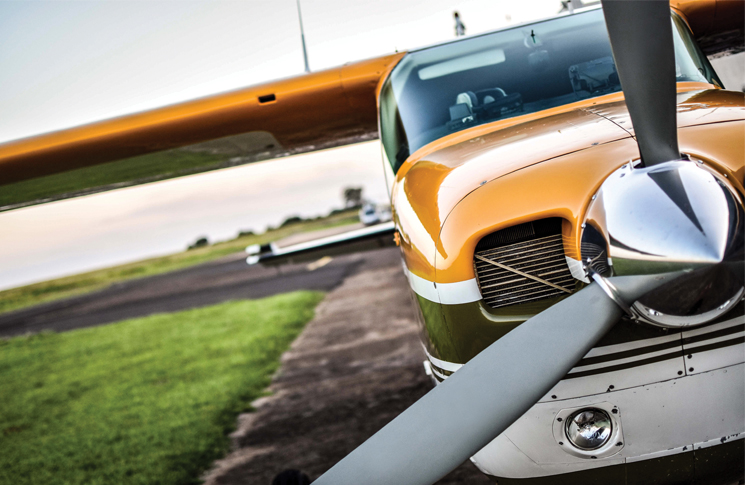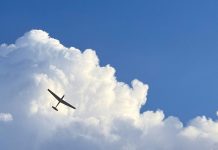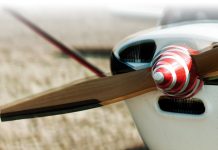A series of dubious decisions led to a frightening crash landing
From a safe distance I surveyed the depressing scene – the Cessna 182 crippled in the middle of the runway, its nose unnaturally low, the propeller tips bent neatly backwards, belying the violence of their impact moments before with the hard dirt runway.
With a strong smell of avgas in the cockpit, I was quick to shut down the electrics and fuel and get my passengers – 3 very shaken kids, 2 of them mine – to safety.
My first reaction had been utter disbelief. How could this have happened to me? And on this of all days? After all the safe landings I had made, why had this one gone so terribly wrong?
I had gained my private pilot’s licence and a constant speed endorsement 6 months before the accident. Soon after, I set off on a wonderful journey through the Australian outback. It was a great trip and I was proud of the way I handled the Cessna and the landings I executed at remote strips, sometimes in difficult conditions.
The Cessna 182 is not the easiest aircraft to land, especially for a relatively low-time pilot. It had struck me during my endorsement training that the controls became very heavy when the speed washed off in the flare and, on several occasions, I found myself wondering if I’d had my Weeties that morning.
From then on, the importance of trimming the aircraft correctly and managing the airspeed and power during the approach were always uppermost in my mind on final. On the day before the accident, I organised a check flight in the 182 as I had not flown it for several months. The instructor put me through my paces and I performed well, executing several nice landings.
Following the check ride, I took another pilot up to do some sightseeing over a nearby picnic race meeting. In all, I logged more than 2 hours, including several tidy landings. With my confidence high, I decided to take my kids flying the following day. This was a momentous occasion as I had done most of my 131 hours on my own or with another pilot. I wanted to make sure I was absolutely confident when I entrusted myself to fly my kids – after all, they would always be my most precious cargo.
Next day I arrived at the aerodrome with my daughter and son and one of his friends. It was hot and gusty with the wind averaging about 12 knots from the north, giving us a crosswind component of about 11 knots on the duty runway 06. I got everyone into their seats and started thinking about my crosswind technique. I completed my checks, taxied out to the runway, powered up and took off.
At about 70 feet off the deck, a gust of wind hit me from the left. The stall warning squeaked for a second and I pushed the nose down, holding it there until I had enough airspeed to fly away. This seemed to take some time and threw me a bit as I hadn’t experienced anything like it before. This event had a significant bearing on the decisions I made later in the flight.
I resumed an 80 knot climb and levelled off at 3000. It was turbulent and I was worried about my passengers, especially my daughter. It was clear they were more concerned with the turbulence than the scenery (‘Is everything OK?’, ‘It’s very bumpy’, ‘What was that?’). I decided to land and reschedule the flight for a calmer day.
To reduce the likelihood of any more negative crosswind experiences, I decided to land into wind on runway 36, a 600-metre grass strip, which the drought had reduced to dirt with occasional patches of green. While 36 was into wind, it was not without its drawbacks.
Significantly, it is less than half the length of the main runway and, due to the surrounding terrain, tends to have more turbulence and windshear on final. And because final is over a downsloping hill, this creates the illusion of an upslope on the other side of the bitumen cross strip. There are also a fence and trees just past the far threshold, so it’s not conducive to overshooting. Even so, at the time, it seemed the better option.
I made a wide circuit and joined final at 80 knots, faster than usual, to reduce the effect of windshear. I arrived over the threshold fast and pulled the power back to idle. I hadn’t trimmed properly and consequently the control forces were heavy. My first ‘touchdown’ came as a surprise. The nosewheel grazed the ground and I instinctively pulled back on the control column, causing the aircraft to leap into the air. I attempted to control the bounce with elevator but we hit again, this time much harder.
Dirt flew up in front of the windscreen and the ELT started blaring, frightening the living daylights out of my passengers and me. I knew the prop had hit the runway but was not sure how much damage had been done. I considered going round but I was concerned about the prop damage and how long it had taken to reach climb speed on take-off. I had to clear the fence and the trees, which were coming up fast straight ahead. I could apply a small amount of power and try to smooth the aircraft back onto the runway but that would also bring me closer to the obstacles at the end of the runway. I was now focused on keeping the aircraft straight and centred. I bounced again and the stall warning sounded. I was airborne again, but not flying.
The aircraft dropped onto the runway and begun speeding along the ground, nose low, prop still running and chewing dirt.
The aircraft dropped onto the runway and begun speeding along the ground, nose low, prop still running and chewing dirt. The nosewheel had collapsed and it was pointless (and possibly dangerous) to apply the brakes because I was unsure of the consequences of that action given the state of the aircraft. As soon as the aircraft stopped, I shut everything off and quickly got everyone to safety.
Lessons learnt: I have learnt a huge amount from this accident. Certainly, the presence of my children, and my anxiety about their safety, led me to make decisions I would not normally make. In retrospect, I should have used the longer runway and tackled the crosswind as I had done successfully many times before. I should have made stronger command decisions and kept my focus on flying the aircraft. Flying a higher-than-required speed on final, not trimming adequately, overcorrecting the early touchdown and not applying power to correct the situation were all significant contributors to this accident. Thankfully, these lessons were learnt without injury to my precious cargo.






Comments are closed.